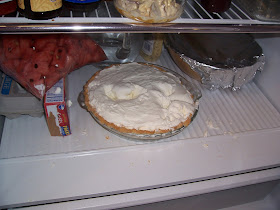Cookies and I used to have problems communicating. I would follow the recipe, and then they would do whatever the heck they wanted. Then I would scream and cry and slam doors. Actually I never screamed or cried, but I probably did slam a door or two. No matter what I did I always got flat cookies. Sometimes I got PANCAKES. I did everything I could think of without any result and finally decided I was just a horrible cookie-maker. I could no longer be Mrs. Clause when I got old. It was a rough time for me.
Luckily, one day I discovered a trick that changed my life.
WEIGHING MY FLOUR.
A few of us have been having a conversation about this through comments on the S'more Chocolate Chip Cookies post and I wrote
this post mainly because I really felt that I needed to share it with *all* of you. The jist is that flour weights are SO variable. How much you are actually using depends a lot on the brand of flour, how you measure it, etc. Usually this discrepancy may not be a big deal, but when it comes to cookies, even a little bit can throw you off.
The easy solution is just to weigh the flour. The tricky part is that there are lots of answers for how much 1 cup of All-Purpose flour should actually weigh, (all from reputable sources). The average seems to be about 4.5 ounces, but I've found 5 ounces to work perfectly for me so that is what I do.
To demonstrate this whole flour craziness, I conducted a little experiment for you this week. I made a batch of chocolate chip cookies. My recipe called for 2 1/2 cups of flour, so I measured that out using my usual method, scooping flour into my measuring cups and leveling them out. I then weighed my total flour.
Can you read that? 10.5 ounces of flour.
We decided each cup should have 5 ounces. So I'm missing 2 ounces of flour here. That doesn't seem like a lot, but lets add in flour until we get to 12.5 and see how much that is.
Finally reached the correct amount of flour weight-wise. And... *drumroll please* ... I added nearly an extra half CUP of flour.
It's pretty easy to see why I was getting flat cookies if I was only putting in 2 cups of flour where 2 1/2 is called for.
I now measure my flour every time I bake cookies (funnily enough it doesn't seem to affect my cakes and other baked goods so I leave those be), and they all turn out great. If you are having problems with your cookies I highly recommend doing this. If this trick still doesn't do it for you, feel free to try some of the other remedies below:
-When a cookie recipe calls for butter, replace half of that with stick shortening (Crisco). If you want really fluffy cookies you can replace all the butter with shortening, but you will sacrifice some of the flavor.
-Try refrigerating you dough for 20 minutes or so before baking. Always keep your dough in the refrigerator in between baking sessions (ie: While one cookie sheet is baking, keep the unscooped dough in the fridge until ready to bake).
-Allow your cookie sheet to cool in between baking sessions. Once you've removed hot cookies from it, place it in the freezer for a few minutes until room temperature or slightly cool, before using again.
-Check that your baking soda isn't expired.
-Do not melt your butter before using! This means if you forget to bring it to room temperature, do NOT put it in the microwave to speed the process (Totally guilty as charged here)
I hope this has helped, and I wish you many a fluffy cookies and the chance to fulfill all your childhood dreams (but being Mrs. Claus when you grow up is already taken, so back off.)


















































